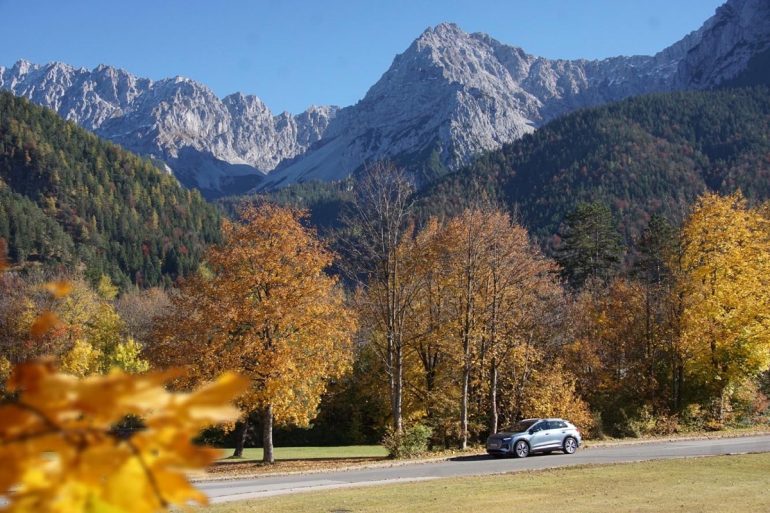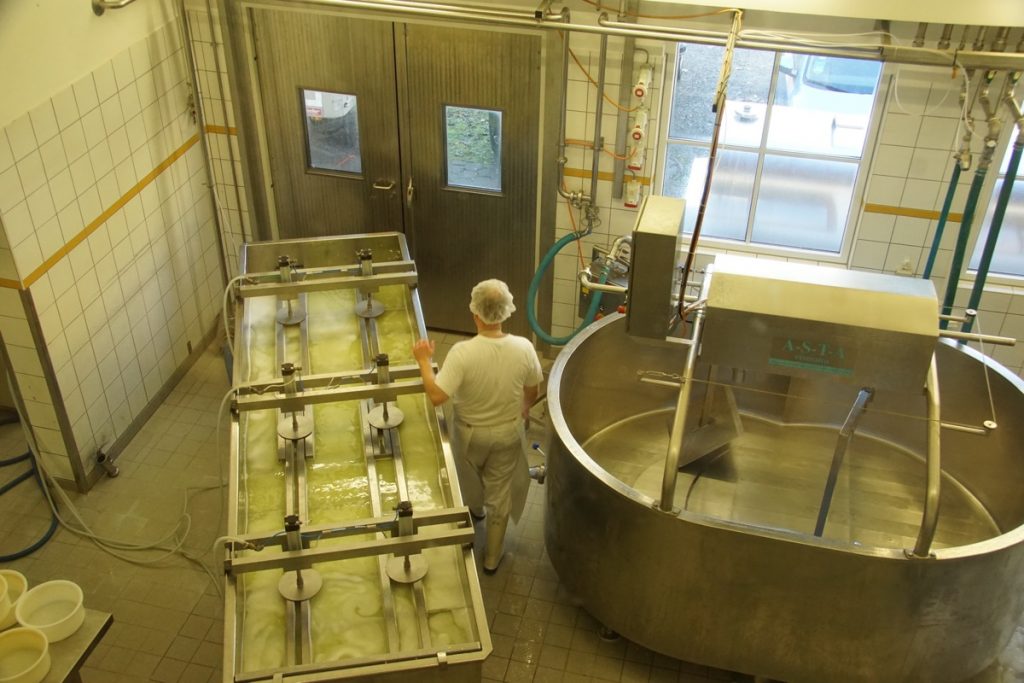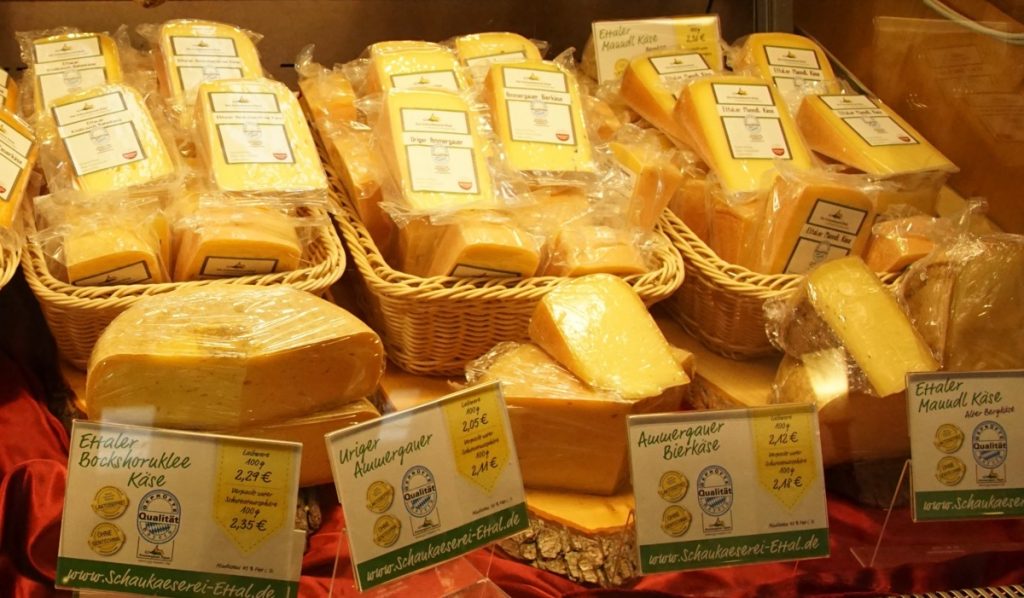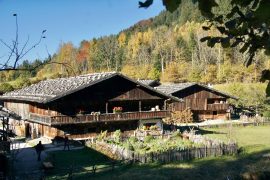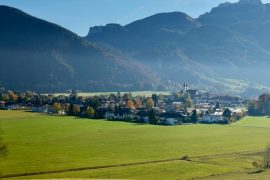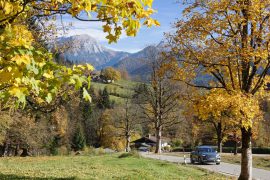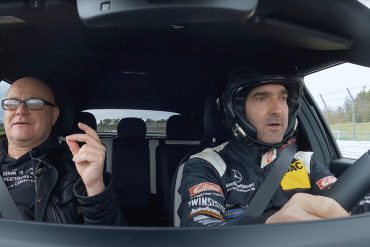Hopfen am See – Oberammergau – Ettal – Garmisch Partenkirchen – Walchensee – Bad Tölz – Tegernsee – Schliersee – Spitzingsee
After my Audi e-tron Q 4 has been fed electrons overnight at the Biohotel Eggensberger and I was able to eat a hearty organic breakfast, the journey continues on the German Alpine Road, from which I had deviated a little because of the overnight stay at the Biohotel at the Hopfensee and the Festival House on the western shore of Lake Forggensee. So back to Füssen and there, as yesterday, towards Schwangau and the royal castles, which I now pass.
Neuschwanstein Castle and the Säuling, the prominent local mountain of Füssen, slowly disappear in the rearview mirror as I follow the German Alpine Road northwards. Via Halblech and Steingaden, the route swings a good distance away from the Alps and might as well call itself the “German Alpine Road” here. But the ride through the undulating moraine landscape has its charms, especially because you can now see the mountain range of the Ammergebirge from a reasonable distance. Due to time constraints, I forgo a visit to the Wieskirche, an opulently decorated place of worship surrounded by green meadows and garnished with Alpine scenery.
In Oberammergau, the route takes you up close to the Alps again, and white limestone mountains frame the ride. I make my next stop in the centre of Oberammergau. This time not a stop in terms of sustainability, but more in terms of art history. The aim is to trace the old Bavarian “street art” of Lüftlmalen. Standing in front of Pilatushaus, I am amazed by the splendidly painted 18th century façade, whose fresco “Christ before Pilate” gave the house its name.
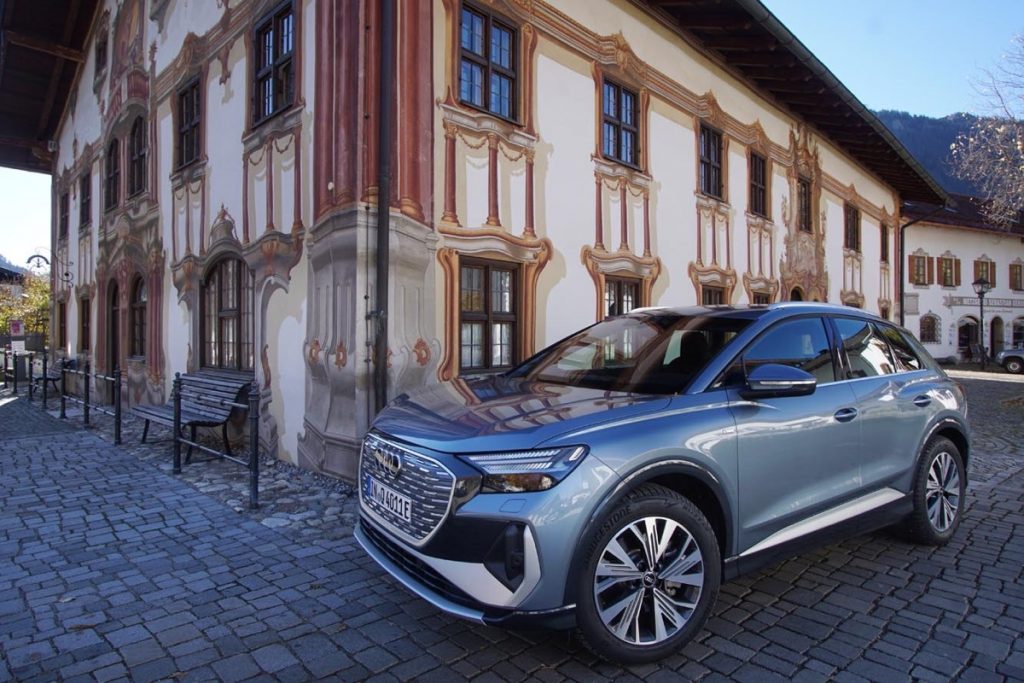
My next stop is a full five kilometres beyond Oberammergau: I reach the imposing Ettal Monastery, whose mighty church looks like St. Peter’s Basilica transplanted from Rome to the Alps.
My destination, the Ettal show dairy, which beckons at the end of Ettal, seems comparatively modest. Even though it may not be as imposing as St Peter’s Basilica, it is certainly a temple of pleasure. Here, local milk from the surrounding pastures is processed into delicacies such as Ettal garlic cream cheese, Ammergau fire cheese or Bergwiesnkas with chives. Germ-free – and not just since Corona, because cheese production has to be scrupulously clean – you can watch the cheese-making process from a gallery behind glass panes.
Ulrike Zwink, a long-time employee and connoisseur of the cheese dairy, explains to me that the husbandry and feed of the dairy cows are subject to precise specifications, which, for example, only allow locally produced feed or prohibit the use of genetically modified feed or chemical pesticides. 37 local farmers deliver 3,000 litres of milk every day to the cooperatively run cheese dairy and are committed to local marketing as well as healthy food. Which you can also taste from these hearty cheeses, as I convince myself over a snack.
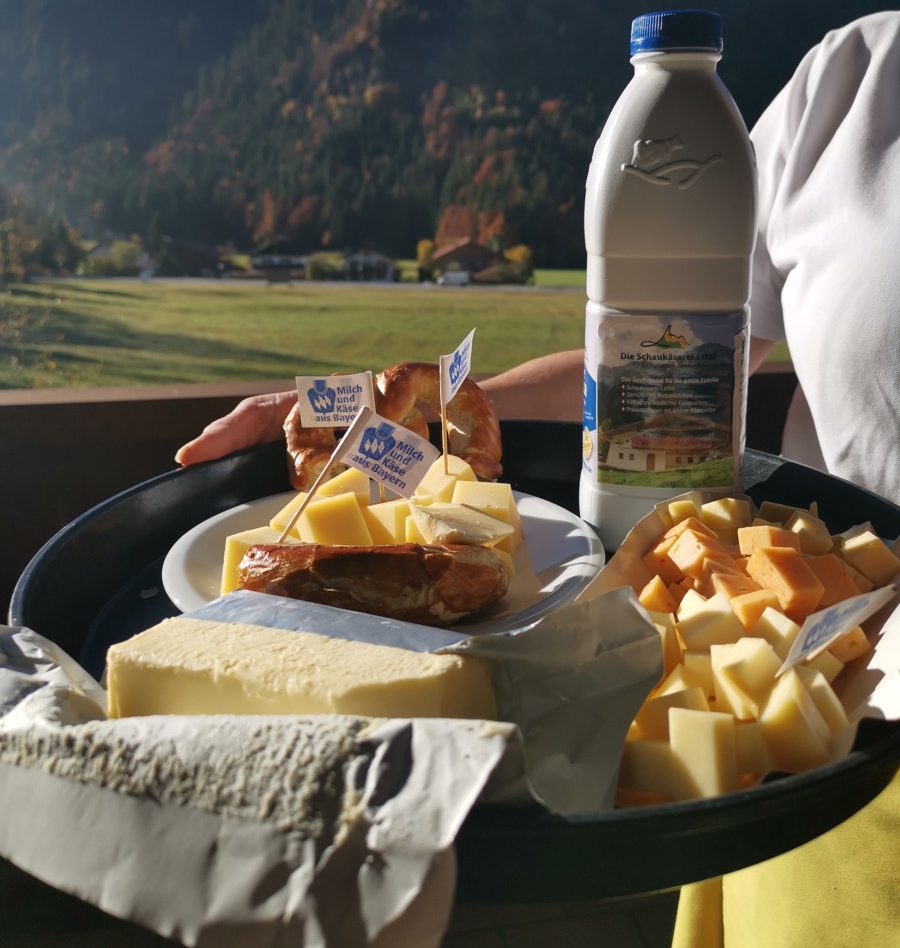
Fortified with cheese snacks and pretzels, I now feel like a dessert. And Mrs Zwink had given me a very special tip for the way back, if I want to be precise. I drive the few kilometres back to Oberammergau and find the Eiscafé Paradiso in the Dorfstraße, which – as the name suggests, the well-known Eiscafe Paradiso in Oberammergau – offers paradisiacal ice cream creations and gets the milk for them fresh every day from the Ettal cheese dairy.
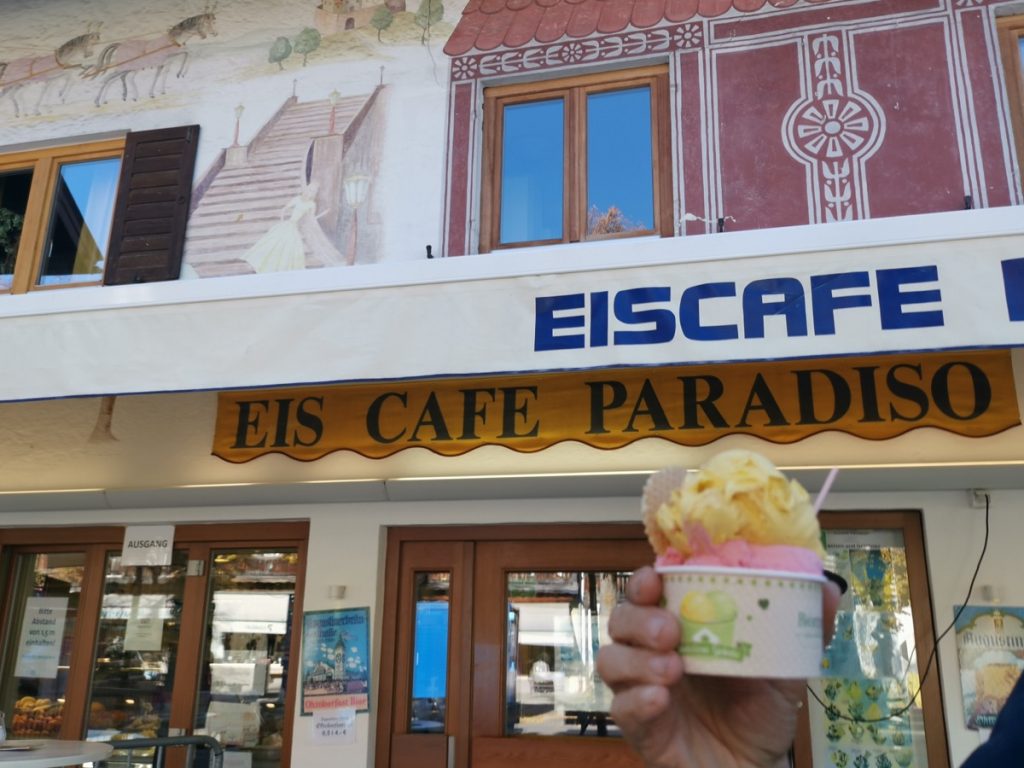
As I let my mango and strawberry ice cream melt on my tongue, two bearded figures approach me. My first thought: here in the location of the world-famous Passion Play, they could be two performers. Smiling mischievously, I ask the two passers-by: “Are you Jesus and Judas together?” I shout across the street. “No, the first and the second mayor,” I hear back promptly. I almost choke on my ice cream laughing, because it’s actually the first and second mayors who are walking through their town. And in a short conversation they tell me about the e-car sharing project offered by the Ammergau Alps Nature Park with locations in 10 villages.
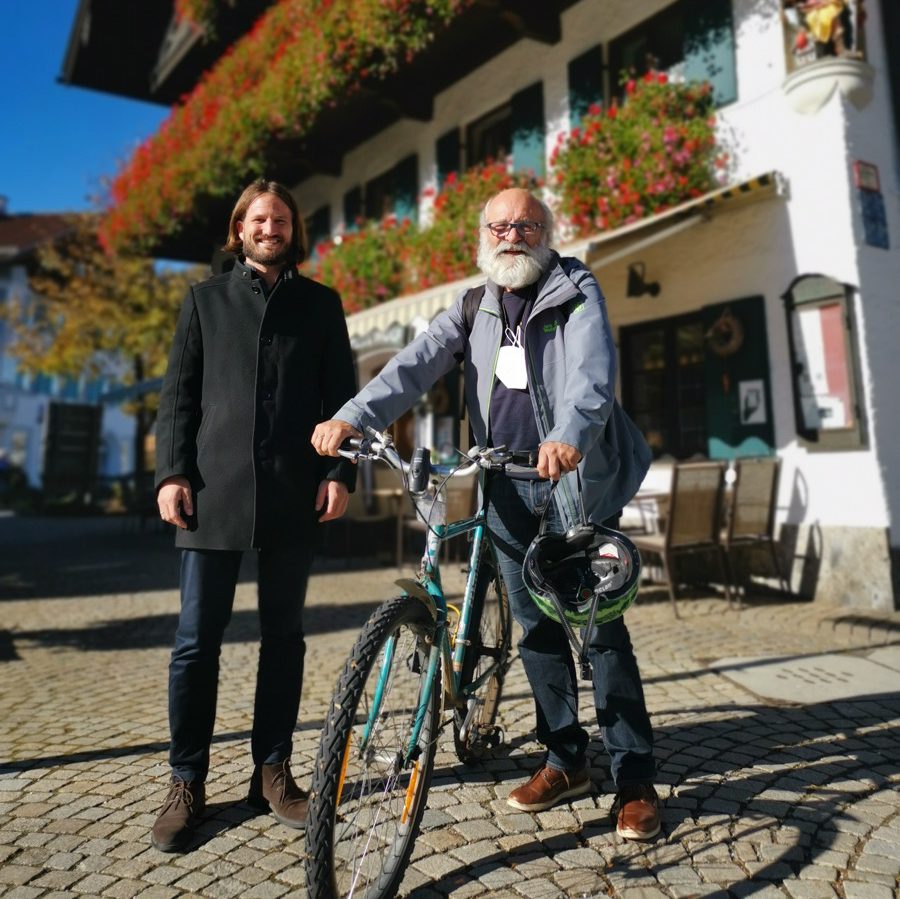
With charging infrastructure, a simple app for booking, paying and charging, and attractive prices, this is a bold step towards e-mobility and sustainable car utilisation. Andreas Rödl then also briefly describes to me the way to the next charging points.
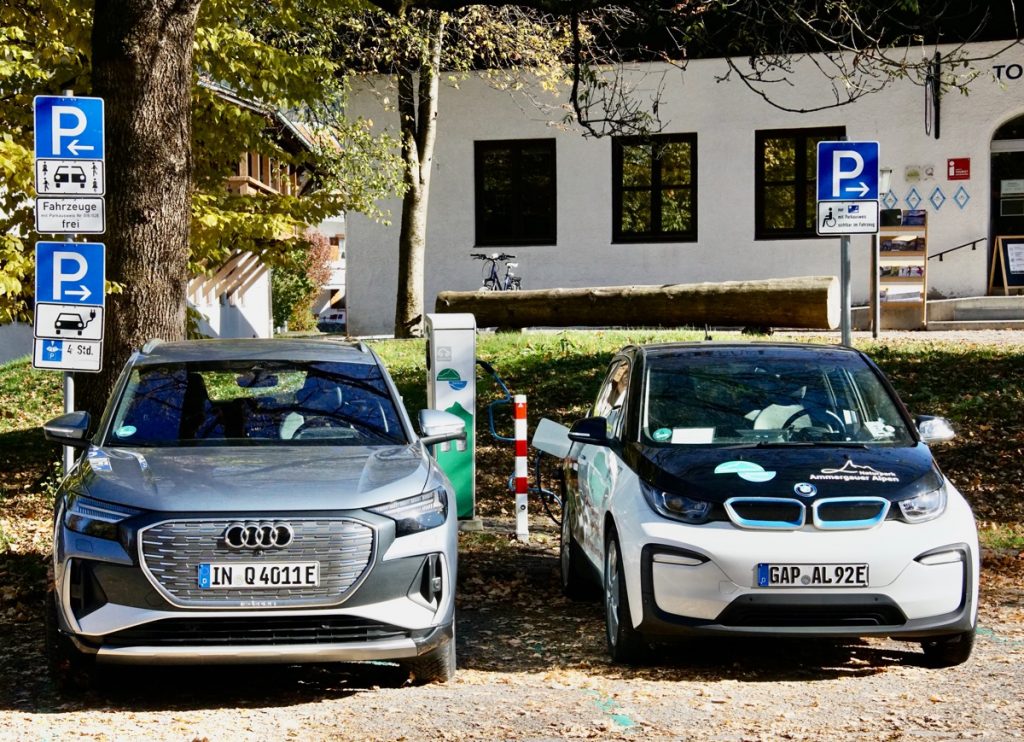
I continue my journey on the German Alpine Road in an exhilarated mood. Exhilarated also because the road now descends steeply and curvaceously to Oberau in the Loisach Valley. It still doesn’t feel like a real Alpine pass, but at least there is a real hairpin bend. The Q 4 is happy anyway, because with its low centre of gravity it sweeps safely and unshakably through the bends. On the busy B 2, the German Alpine Road reaches Garmisch-Partenkirchen. I take a few more pictures of my electric tour companions in front of the famous ski jump complex and then we continue.
In front of the striking chunk of the Wetterstein mountains, the B2 and the Alpine Road turn east and lead over to the next no less striking limestone mountain range, the Karwendel.
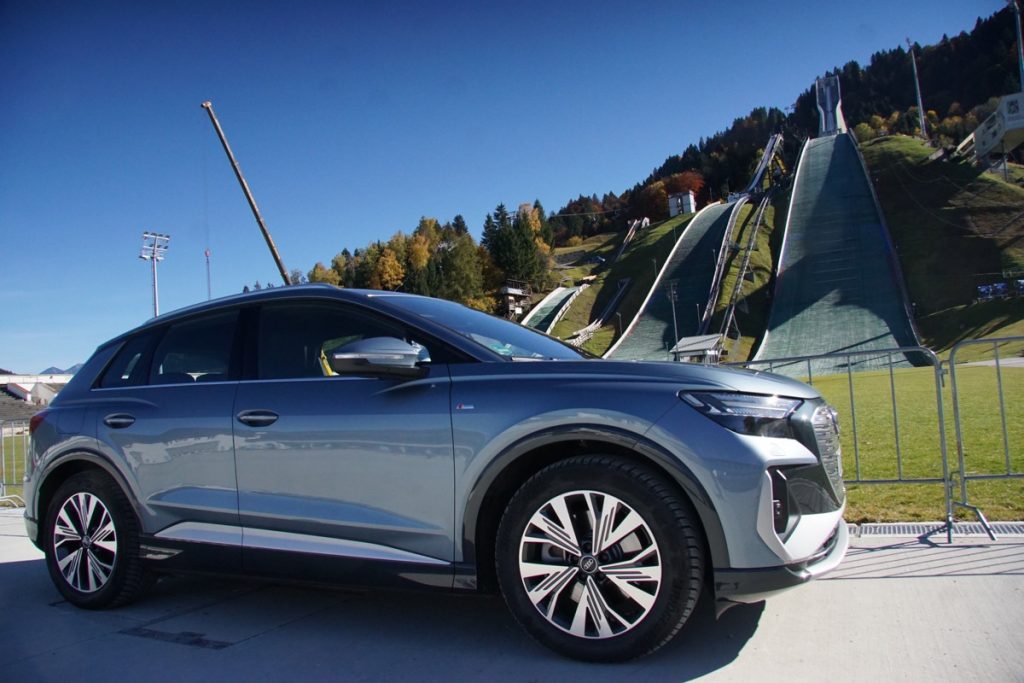
Mittenwald would be tempting, as would a gallery of Lüftlmalerei like Oberammergau. But just like before Garmisch-Partenkirchen, I turn off before Mittenwald – this time to the north. The German Alpine Road leads me to Walchensee, which lies picturesquely nestled between wooded mountain slopes.
But the alpine road doesn’t seem at all like an idyll. Just behind the lake, it seems to be brushed with curves and wild routing. The Kesselbergstraße is a steep mountain road that leads down to the Kochelsee lake and is great fun to drive. The energy management of the Audi e-tron Q 4 recuperates excellently, so that I only need to let off the gas before the bends and the recuperation supplies plenty of electrical energy to the battery. Always an aha experience. Ingenious, because this energy would otherwise be dissipated by hot brakes, causing abrasion and wear. Sustainable engineering. Bravo.
So I convert my car into a downhill power station and arrive energised on the shores of Lake Kochel. Where a completely different kind of downhill energy wonder stands, the Walchensee power station. Here, it’s not the weight of a car that is turned into energy, but the waters of the Walchensee, 200 metres higher up, which weigh several tonnes. And it has been doing so for almost 100 years. As early as during the First World War, the Bavarian state parliament was concerned with the project. Sceptics at the time argued that there would not be enough customers for the electricity and that electric locomotives would not be as profitable as steam locomotives. The visionaries prevailed, the project was started, and in 1924 the first electricity flowed into the grid. King Ludwig II sends his regards.
Today, the Walchensee power plant is an important industrial monument whose success story is not yet over. It still supplies electricity as one of Germany’s largest storage power plants, which is of great importance at peak load times. In a visitor centre you can learn about the exciting background of the power plant. With three other visitors, I was also allowed to marvel at the turbine hall, the heart of the power plant, so to speak.
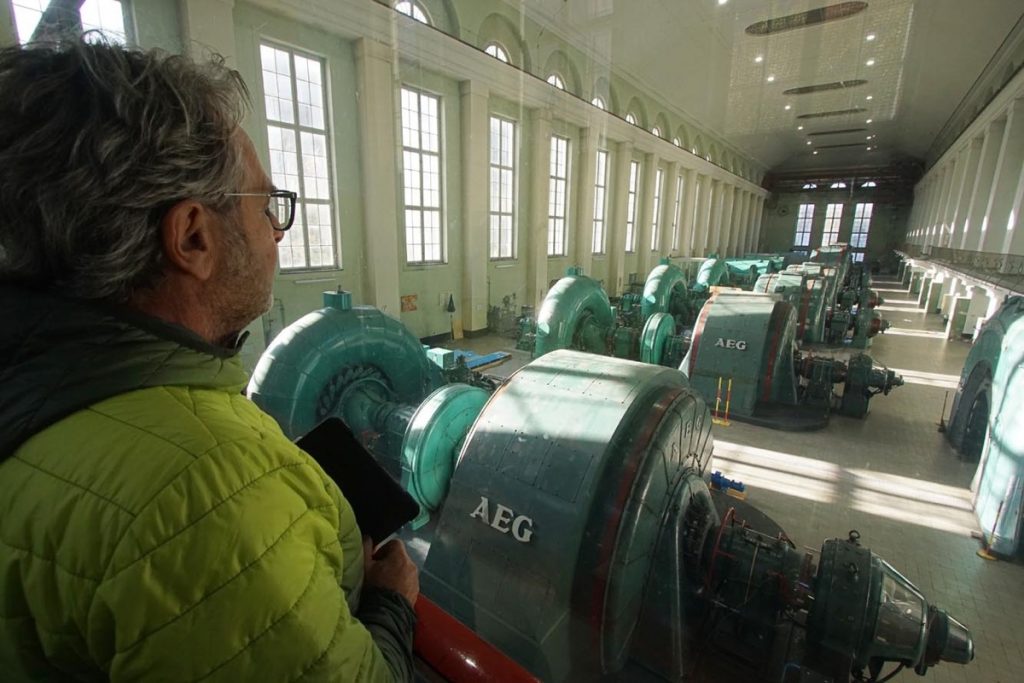
The noise here is deafening, the work is effective and loud. There are six brawny-looking turbines driving their associated three-phase generators.
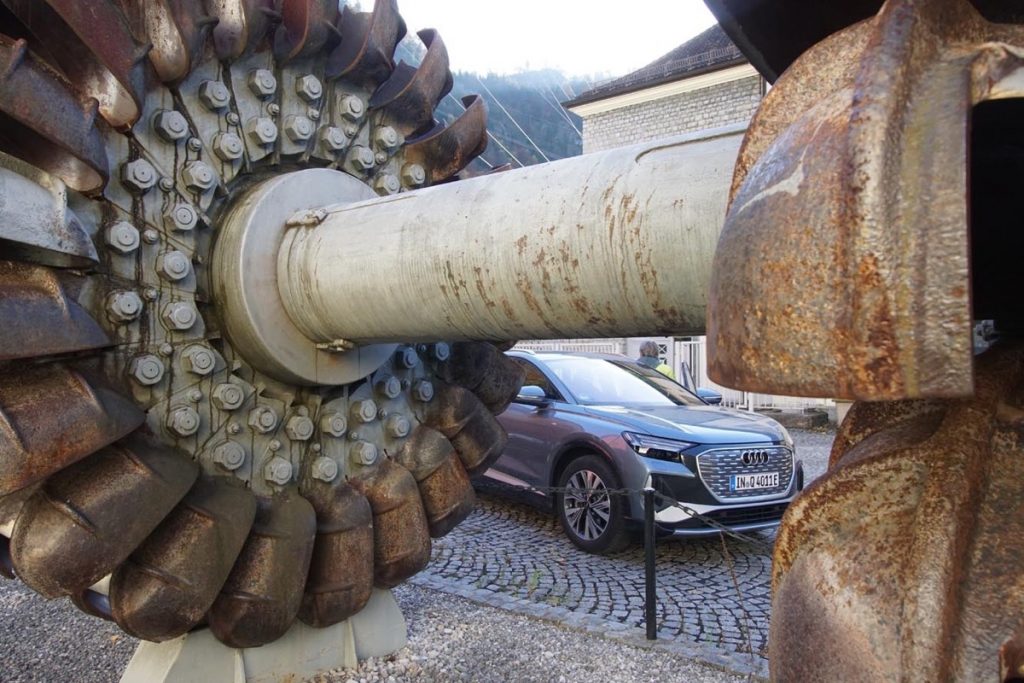
I was able to marvel at the masses being moved here in the courtyard of the power plant, where I parked the e-tron Q 4 right next to the huge runners of a discarded Pelton turbine, which made it look quite small.
Such a huge thing turns up to 500 times a minute under the pressure of the water shooting down from 200 metres above. I am impressed. And I learn why such storage power plants fulfil an important function even today in the time of much larger power plants. Unlike a large power station, they can be switched on and off very flexibly, depending on demand. So you don’t let them run at night in order to accumulate water again up in Lake Walchen, which is then optimally available during the time of high electricity demand in the mornings and mornings.
After this impressive nature-technology experience, I continue on the German Alpine Road, which now reaches out into the foothills again behind Kochel. The extensive Kochelsee marsh flies past me on the left and so do the onion domes of Benediktbeuren Monastery.
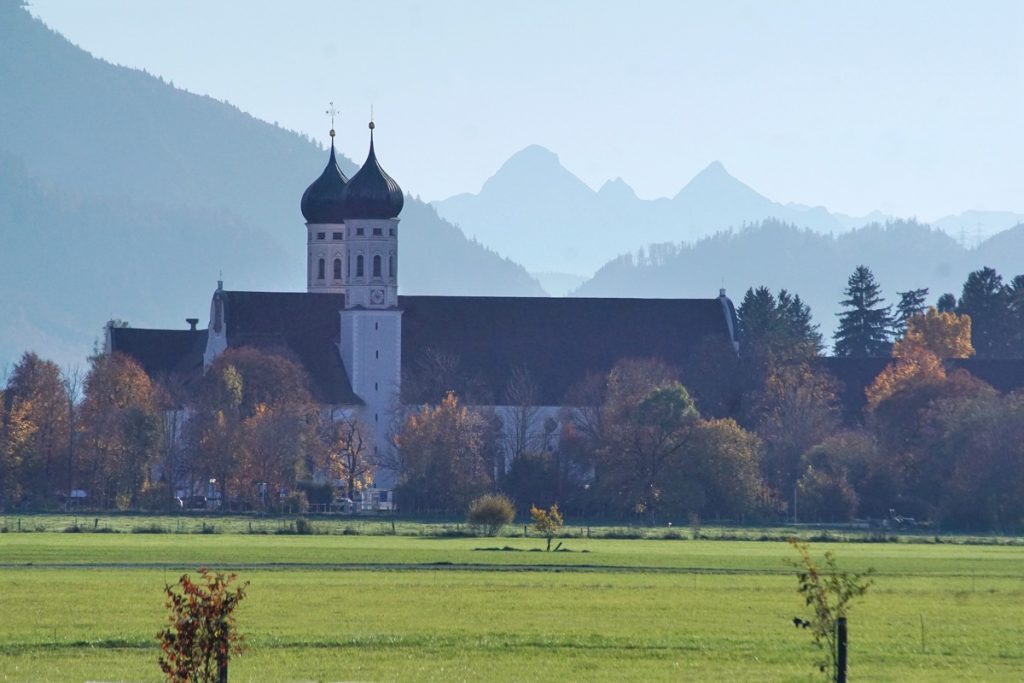
Near Bad Tölz, which was already rich in the Middle Ages thanks to the salt trade and rafting, I meet the Isar, which I now follow on my route upstream towards the Karwendel mountains to the Sylvenstein reservoir, one of the great postcard motifs of the German Alpine Road. The lake, which lies like a fjord between the mountains, was built in the 1950s to regulate the water fluctuations of the Isar and to generate electricity at the same time.
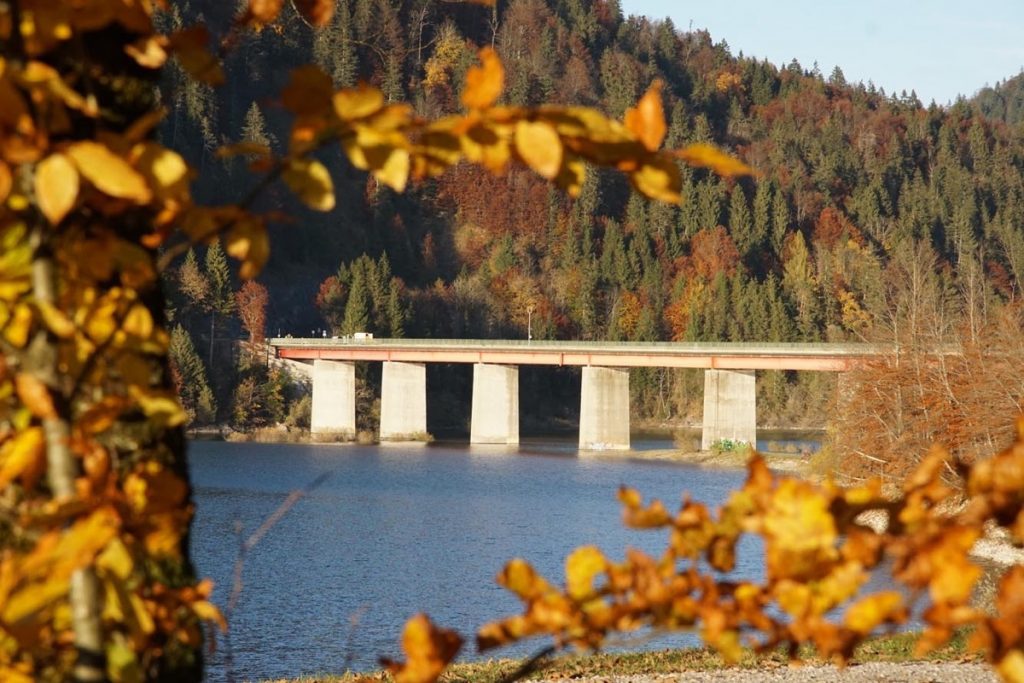
Framed by forested mountain ridges, the German Alpine Road meanders in gentle sweeps northwards to Lake Tegernsee and goes from a very natural section to the stark opposite. Between Rottach-Egern and Gmund, traffic on the Tegernsee is very slow – especially at weekends. But at least there are Upper Bavarian parade views to be seen through the windscreen, of blue water, the mountains and the mighty houses with their geranium-decorated balconies. It would be worth stopping there even without a traffic jam, but for today I have to reach my night’s lodging at Spitzingsee. So I quickly continue on to Schliersee, which could be Tegernsee’s little sibling, because everything is a bit smaller and quieter here.
But it is really quiet at Spitzingsee, which I reach as a detour from the German Alpine Road. Here the roads for cars soon end and the Mangfall Mountains take over, here is peace and quiet. Directly on the lake in this mountain idyll is the Arabella Alpenhotel am Spitzingsee. It has already become dark and I belatedly join the round of interlocutors already gathered to talk about e-mobility, tourism and sustainable hotels and gastronomy.
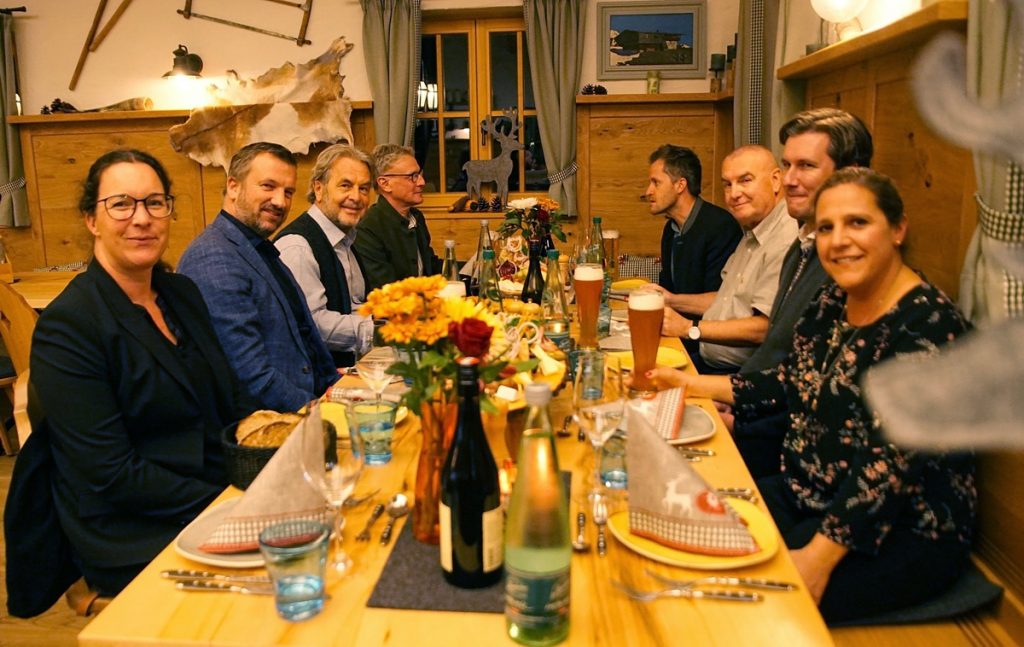
Text and pictures: Elmar Thomassek
Links:

